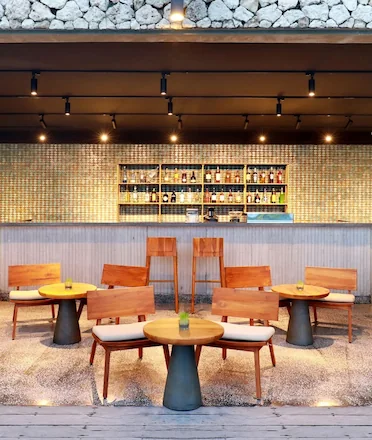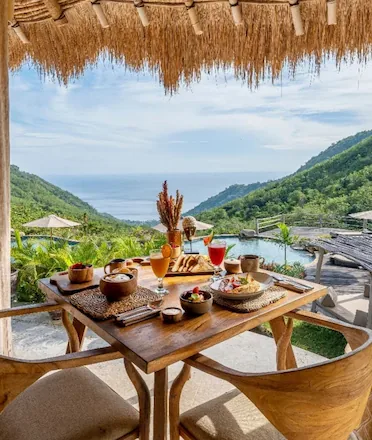As we all already know by now, Bali is renowned for its vibrant culture and rich traditions. Beyond enchanting rituals such as Ngaben, or Nyepi Day, Bali is home to a plethora of unique traditions and rituals that showcase the island's deep-rooted spiritual beliefs. From ancient war rituals to captivating ‘kissing’ ceremonies, these customs offer a glimpse into the island's fascinating heritage. Let's explore some of the most extraordinary traditions and rituals in Bali that you may not be familiar with!
The Most Unique Bali Traditions You Might Not Know About
Mepeed
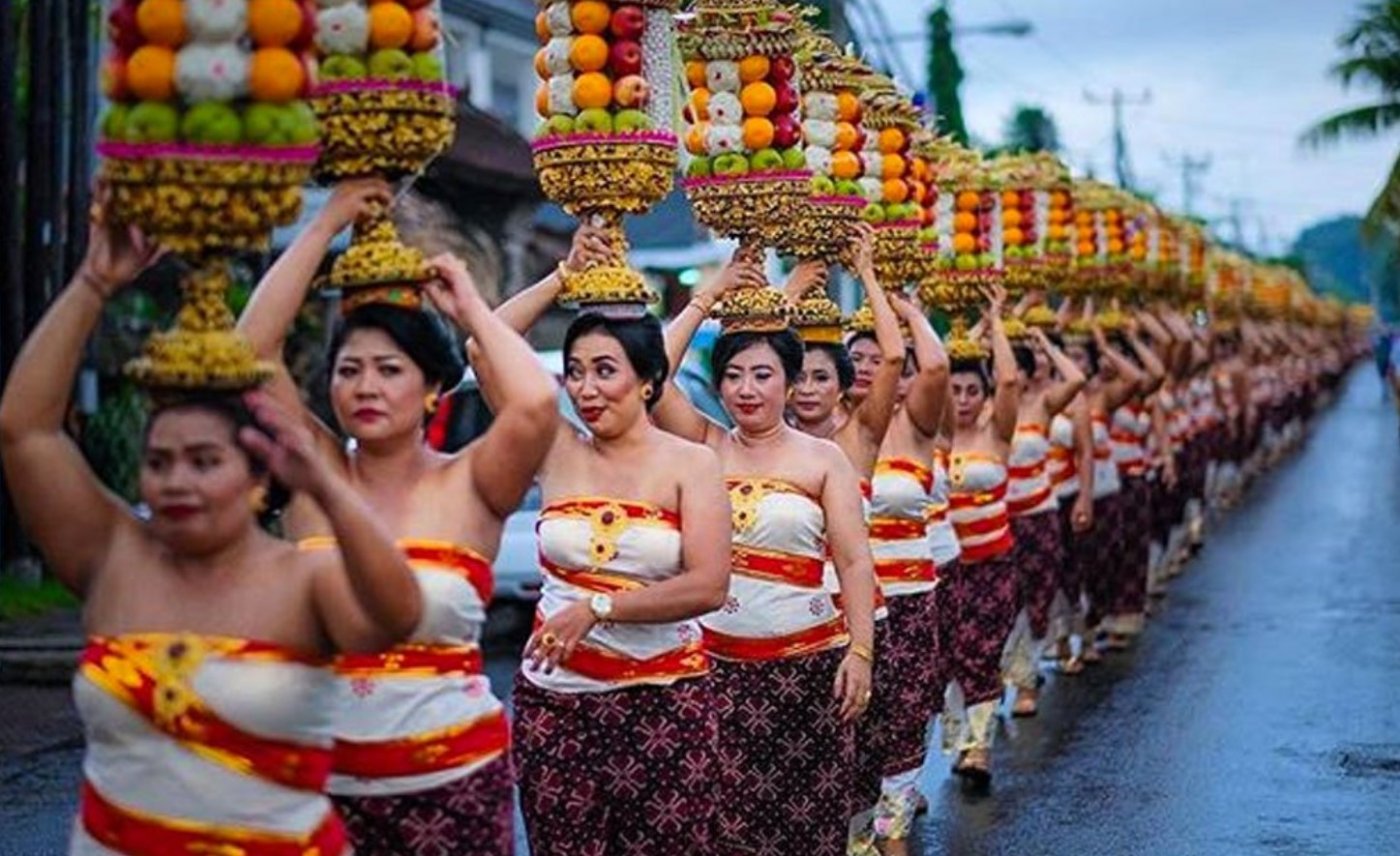
Mepeed, derived from the Balinese word "peed" meaning "walk in line," is a unique tradition predominantly observed by women. Participants carry towering arrangements of fruits, flowers, and traditional cakes known as Gebogan on their heads. Mepeed is held to express gratitude to the Almighty God and typically takes place during temple anniversaries. While Mepeed is widely practiced throughout Bali, the version held in Sukawati, Gianyar Regency, involves people of all ages and genders walking in procession, but without the Gebogan on their heads.
Mesbes Bangke

Considered as the most unique and extreme Balinese traditions, Mesbes Banke is practiced in Banjar Buruan, Tampak Siring, Gianyar Regency. It is associated with personal cremations (Ngaben ceremony). In this ritual, local villagers tear apart the corpse with their hands or even their mouths. The tradition originated from a desire to eliminate the unpleasant odor of decomposing corpses, and it is believed to bring excitement and protect against bad luck. Nowadays, the practice has evolved, and the corpse is tightly wrapped to prevent direct contact while maintaining the symbolic significance of the tradition.
Ngurek
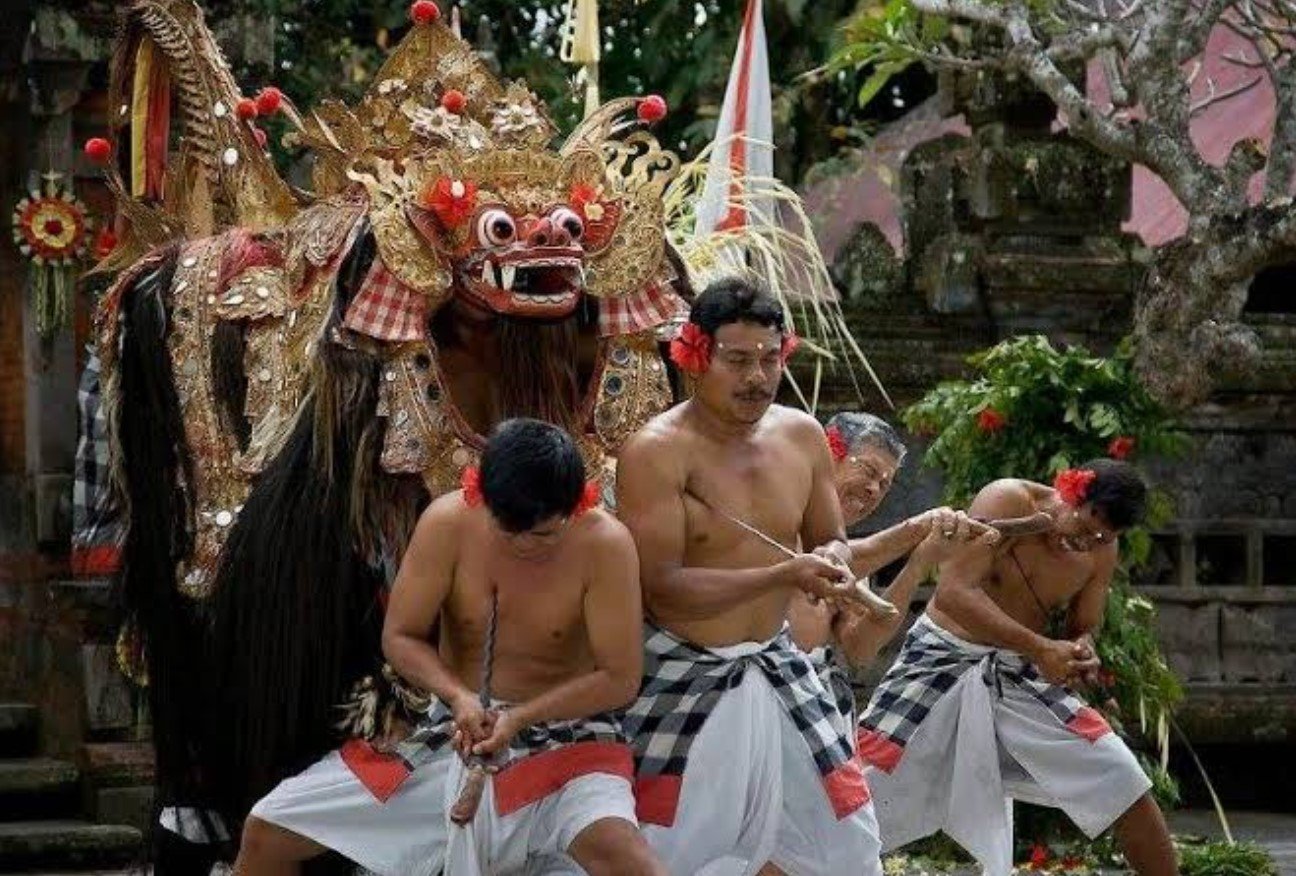
Another remarkable tradition in Bali is the Ngurek ceremony, which takes place in several villages across the island. Ngurek is a ritualistic dance performed by a chosen group of individuals who are believed to be possessed by spiritual entities. During the ceremony, these individuals undergo a trance-like state and exhibit extraordinary physical abilities. The participants, known as "warriors," pierce their bodies with sharp objects, such as daggers, nails, or skewers, without experiencing pain or causing injury. The pierced objects symbolize the spiritual protection and invincibility of the participants. The warriors dance vigorously, showcasing their endurance and defying the limits of the human body. It is believed that through the Ngurek dance, the warriors purify themselves, bring blessings to the community, and serve as a bridge between the earthly and spiritual realms.
Ngedeblag and Ngerebeg
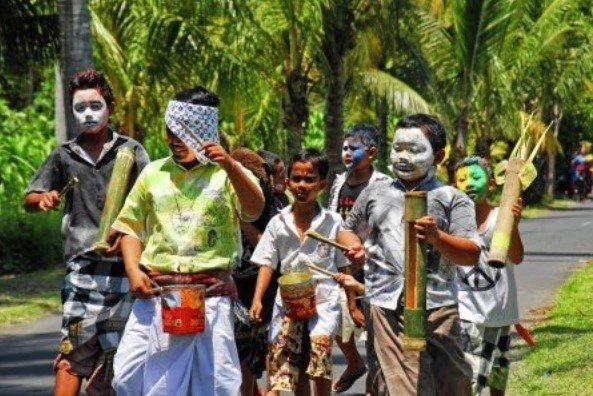
Also known as 'Balinese Halloween', Ngedeblag and Ngerebeg are fascinating traditions celebrated in different villages. Ngedeblag, held in Kemenuh Village, Gianyar Regency, aims to protect the village from misfortune and disease. People, both young and old, paint their faces in scary or funny masks and walk around the village, creating noise with various objects. Similarly, Ngerebeg in Tegalalang Village, Gianyar Regency, involves children and adults dressing up in scary attire, parading through the village to ward off negativity. These traditions hold deep cultural significance and are conducted to neutralize negative energies and bring good luck.
Nyepi Laut or Nyepi Segara

In addition to the well-known Nyepi Day, Bali also celebrates Nyepi Laut or Nyepi Segara, which honors the God of the seas and oceans, Dewa Baruna. This unique sea seclusion day is observed around the three sister islands of Bali: Nusa Penida, Nusa Lembongan, and Nusa Ceningan. On this day, all maritime activities, including fishing, water sports, and swimming, come to a halt as a way to cleanse and rest the sea. While underwater activities are suspended, it presents an opportunity to explore the islands' above-water attractions, attend temple ceremonies, and savor local delicacies at the bustling markets.
Omed Omedan

Following Nyepi, the Day of Silence, the village of Sesetan celebrates the Omed Omedan tradition. Also known as the "kissing ritual," this event brings together young singles in the village, who hope to find their future partners. The participants engage in a playful tug-of-war while hugging, kissing, and getting drenched with buckets of water thrown by the crowd. Omed Omedan is believed to usher in positive energy and cleanse away negativity, marking the beginning of the Balinese New Year.
Ter-Teran

In the village of Jasri, Karangasem, the unique tradition of Ter-teran takes place once every two years during Nyepi Eve. This sacred fire-fighting ritual involves throwing traditional burning torches made of dried coconut leaves to ward off evil spirits. After sunset, the village is engulfed in darkness, and the villagers return from a ceremony near the sea. It is believed that they are followed by the Bhuta Kala (a devilish character), and the villagers prepare to defend against it by engaging in firefights using the torches. The ritual concludes with the participants being sprinkled with holy water, ensuring their safety and fostering harmony.
Perang Pandan
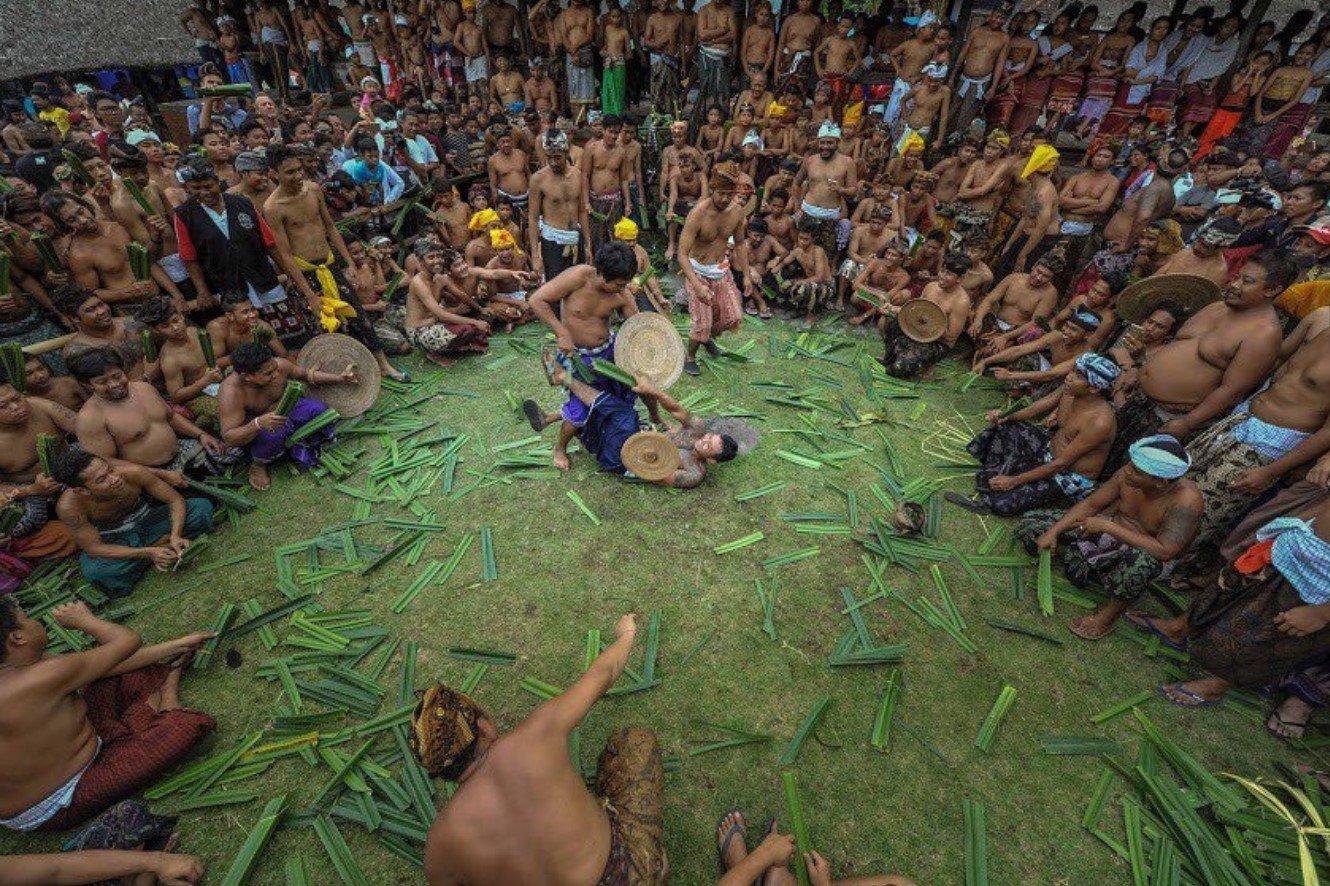
Every June, Tenganan Village comes alive with a distinctive tradition known as Perang Pandan or Pandan War. In this ritual dedicated to the God of War, young men and boys engage in combat using bundles of sharp-edged pandanus leaves as weapons. With bare chests and shields made of woven bamboo or rattan, participants engage in a spirited battle. The ceremony is preceded by prayers, ensuring that the ritual remains spiritually significant and safe for the participants



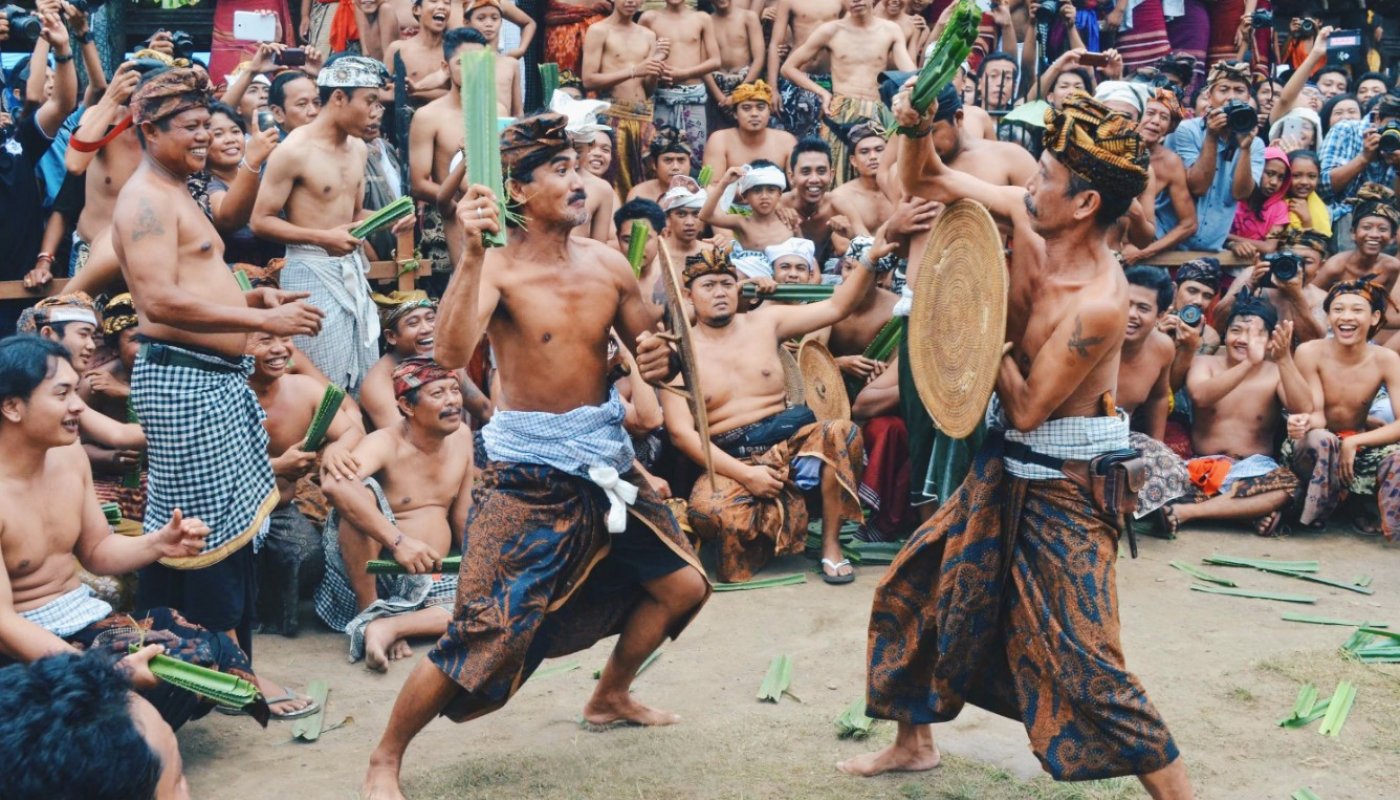
 Chyntia .DW
Chyntia .DW
 Nov 26, 2025
Nov 26, 2025
